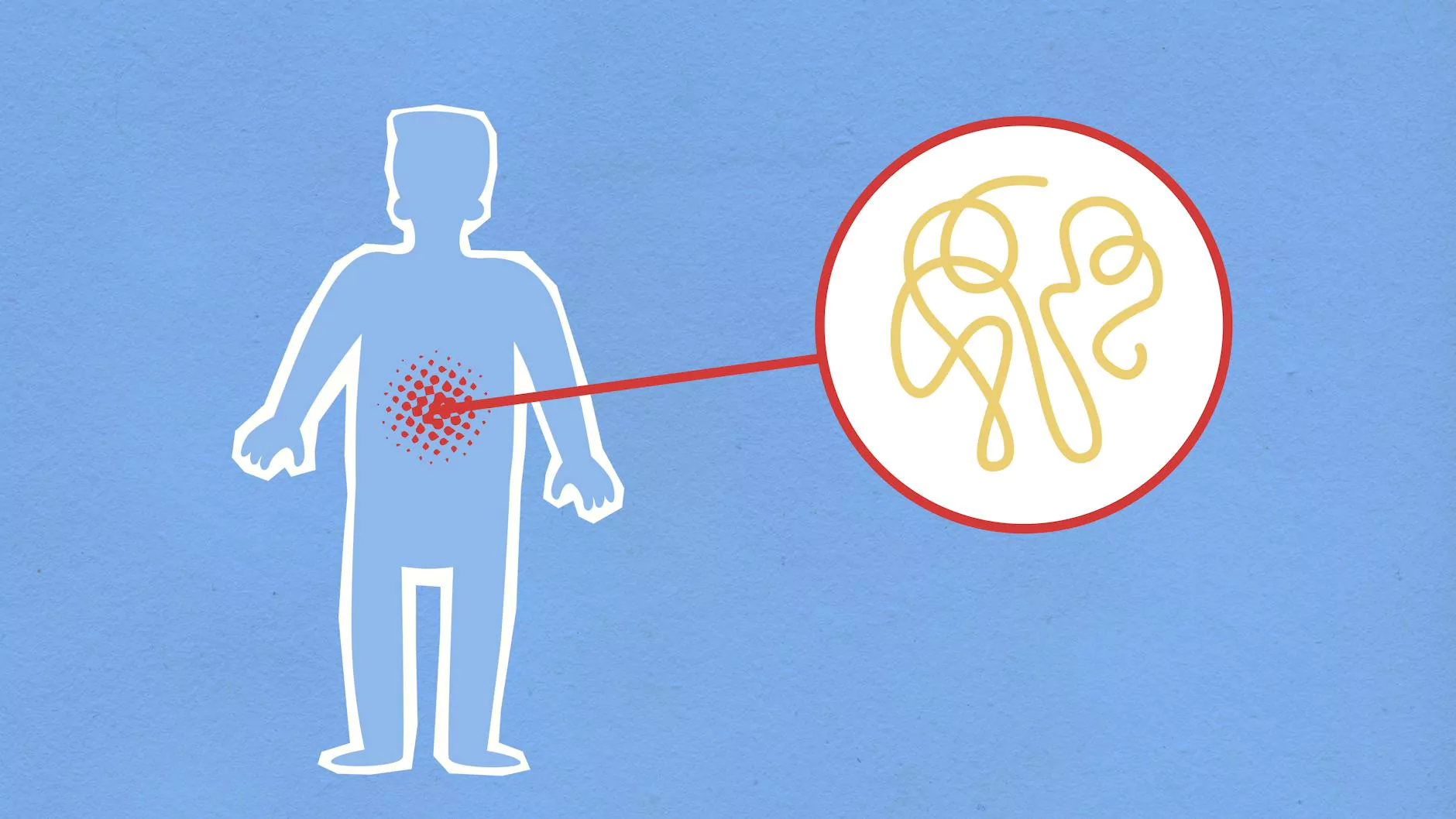Comprehensive Guide to Tendinosis vs Tendinitis: Differentiating & Managing Tendon Injuries for Better Health Outcomes

In the realm of musculoskeletal health, understanding the distinctions between various tendon injuries is vital for effective diagnosis, treatment, and recovery. A common confusion exists between tendinosis and tendinitis, which are often mistakenly viewed as interchangeable. Correctly identifying these conditions not only optimizes patient care but also enhances clinical outcomes for healthcare professionals, including chiropractors, physical therapists, and medical doctors.
This extensive article delves deeply into the nuances of tendinosis vs tendinitis. We explore the biological basis, clinical presentation, diagnostic approaches, innovative treatment strategies, and preventive measures. Whether you are a healthcare provider seeking updated insights or a health-conscious individual aiming for better awareness, this content offers thorough, evidence-based knowledge to elevate your understanding of tendon-related ailments.
Understanding the Anatomy and Function of Tendons
Tendons are robust, fibrous connective tissues that anchor muscles to bones, enabling movement and stability across joints. Comprising densely packed collagen fibers, tendons are designed to withstand significant mechanical stress. However, their composition and function make them susceptible to various injuries, particularly overuse or chronic strain.
Normal tendinous tissue exhibits a highly ordered structure, allowing efficient force transmission from muscle contractions to bone. When subjected to excessive load, microtrauma can occur, initiating a cascade of biological responses which, if unmanaged, may lead to degenerative conditions.
Defining Tendinosis and Tendinitis: Biological and Pathological Perspectives
What is Tendinitis?
Tendinitis refers to an inflammatory condition of the tendon, characterized by acute or subacute inflammation resulting from sudden injury or repetitive overuse. It manifests with classic signs of inflammation: pain, swelling, warmth, redness, and impaired function. Under microscope, tendinitis shows infiltration of inflammatory cells, increased vascularity, and edema.
What is Tendinosis?
Tendinosis, on the other hand, is a chronic, degenerative condition of the tendon tissue without significant inflammation. It involves the breakdown of collagen fibers, disorganized tissue structure, and the formation of fibroblast proliferation. Tendinosis often develops over time due to persistent microtrauma, repetitive strain, or inadequate healing from previous injuries.
Distinguishing Tendinosis from Tendinitis: Key Differences
- Pathology: Tendinitis is inflammatory; tendinosis is degenerative.
- Onset: Tendinitis appears suddenly; tendinosis develops gradually.
- Histological features: Tendinitis shows inflammatory cell infiltration; tendinosis shows collagen disarray and fibroblast proliferation.
- Pain response: Tendinitis pain often worsens with activity and improves with rest; tendinosis pain tends to be persistent and less responsive to rest.
- Diagnostic imaging: Ultrasound or MRI in tendinitis reveals fluid and inflammatory changes, whereas tendinosis exhibits thickened, hypoechoic, disorganized tissue without significant fluid.
Clinical Presentation: Recognizing Symptoms of Tendinosis and Tendinitis
Symptoms of Tendinitis
Patients with tendinitis often report sudden onset of sharp pain during activity, localized tenderness, swelling, warmth, and sometimes redness. The pain typically intensifies with movement and diminishes with rest. Common sites include the shoulder (rotator cuff tendinitis), elbow (tennis or golfer's elbow), Achilles, and knee.
Symptoms of Tendinosis
In tendinosis, symptoms tend to be more insidious, with persistent dull ache or discomfort in the affected tendon. There may be swelling, stiffness, and decreased strength. Pain is often worse after activity or in the morning, reflecting chronic degenerative changes. Because tendinosis lacks significant inflammation, swelling might be minimal or absent.
Etiology and Risk Factors Associated with Tendon Disorders
Several factors contribute to the development of tendinosis vs tendinitis, including:
- Repetitive overuse: Repeated mechanical loading causes microtrauma over time.
- Acute injuries: Sudden strain or overextension can lead to tendinitis.
- Age: Degenerative changes become more prevalent with aging due to decreased collagen synthesis.
- Biomechanical abnormalities: Poor ergonomics, misalignments, or gait issues increase tendon stress.
- Systemic factors: Conditions like diabetes, obesity, and rheumatoid arthritis impair tendon healing.
- Inadequate recovery and improper training: Overtraining without rest hampers repair processes, predisposing to tendinosis.
Diagnosing Tendinosis and Tendinitis: Modern Techniques and Clinical Examination
Physical Examination
Healthcare professionals assess tenderness, swelling, range of motion, and pain during specific tendon movements. Special tests can include resisted muscle contractions and palpation to isolate affected tendons.
Imaging Modalities
- Ultrasound: Provides real-time visualization, identifying thickening, hypoechoic areas (indicative of tendinosis), and fluid (suggestive of tendinitis).
- MRI: Offers detailed tissue contrast, highlighting degenerative changes or inflammation.
- Other tests: Blood tests are generally not necessary unless systemic inflammatory diseases are suspected.
Innovative Treatment Approaches and Management Strategies
Conventional Treatments
Traditional management includes rest, activity modification, NSAIDs, physical therapy, and corticosteroid injections. While effective for tendinitis, these may offer limited benefits in tendinosis, which requires targeted strategies addressing degenerative tissue.
Advanced and Regenerative Therapies
- Extracorporeal Shock Wave Therapy (ESWT): Stimulates tissue regeneration, especially effective in tendinosis.
- Platelet-Rich Plasma (PRP) Injections: Use of growth factors to promote healing of degenerated tendons.
- Dry Needling and Acupuncture: Can stimulate fibroblast activity and enhance tissue repair.
- Physical Rehabilitation: Eccentric strengthening exercises are crucial, especially in tendinosis, to align collagen fibers and restore tendon integrity.
- Surgical Intervention: Reserved for refractory cases, often involving debridement or repair of degenerative tissue.
Preventive Measures: Protecting Tendon Health
Preventative strategies are critical in avoiding progression from tendinitis to tendinosis:
- Proper Warm-up and Cool-down: Prepare tendons for activity and facilitate recovery.
- Gradual Progression of Exercise: Avoid abrupt increases in intensity or duration.
- Cross-Training: Reduces repetitive stress on the same tendons.
- Strengthening and Flexibility Exercises: Maintain balanced muscle-tendon units to distribute load evenly.
- Ergonomic Adjustments: Ensure correct posture and workspace setup.
- Monitoring and Early Intervention: Recognize early symptoms and seek professional advice promptly.
Significance for Chiropractors, Medical Professionals, and Educators
Comprehending the nuanced differences between tendinosis vs tendinitis empowers practitioners across disciplines to diagnose accurately and tailor interventions effectively. Chiropractors, physical therapists, and physicians should integrate advanced imaging, evidence-based therapies, and patient education into their practices.
Educational initiatives should emphasize the biological, clinical, and rehabilitative aspects of tendon injuries. This knowledge dissemination promotes better patient outcomes, reduces chronicity, and supports overall musculoskeletal health.
Conclusion: Emphasizing the Importance of Correct Diagnosis and Management
The distinction between tendinosis vs tendinitis is more than academic; it influences treatment choices and recovery trajectories. Recognizing whether a tendon condition is inflammatory or degenerative directs appropriate therapeutic modalities, leading to enhanced healing and functional restoration.
At iaom-us.com, our commitment to advancing healthcare education ensures that practitioners stay abreast of innovative techniques and emerging research. Whether you’re a healthcare professional or an informed individual, understanding tendon disorders enriches your ability to maintain musculoskeletal health and optimize treatment interventions.
Investing in prevention, early recognition, and modern treatment modalities is essential in managing tendinosis vs tendinitis. With ongoing research and technological advancements, the future of tendon injury management promises improved outcomes, reduced recovery times, and enhanced quality of life for patients worldwide.









